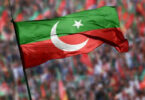Erdal Tanas Karagol
The economic power balance in the world economy is changing. The direction of this change is from west to east. In fact, the beginning of the change was 2008. The 2008 global economic crisis became the turning point of this change. Since that year, the slowing in the economies of the developed countries and as opposed to the developed countries, the ongoing growth in the developing countries despite everything have been indicators that the heart of economy beats in the East.
Global circumstances and developments in the political arena work in favor of the eastern economies. As the problems in the unions existing among western countries are growing, the trust for those unions fades away with each passing day. There is also a problem with the free trade agreements which are planned to be made. Particularly, the Transatlantic and Investment Partnership (TTIP), which was planned to be signed between the EU and the U.S. but then came to a standstill, was posing a risk for the developing economies.
The increase of trade between the U.S. and the EU will cause a shrinking/decrease in international trade for the countries left outside of the agreement. The standstill of the agreement does not mean that it was put on the shelf. Therefore, developing countries have to develop a measure against this kind of agreements which will diminish their trade capacities and shrink their trade markets.
One of the projects which will pave the way for such measures is the project of the Modern Silk Road. Also, the Modern Silk Road will not create a geographic border among countries located on different geographies and continents. The trade which will start among different countries with new cooperation will also lay the groundwork for economic integrations which are necessary for eastern economies.
It is needless to say that this process is not an easy one. However, if today’s conditions are read carefully, and advantages and the direction which the economy is going toward are evaluated well, actors in the economic power balance in the next 10 to 20 years will be very different from today. New success stories for the economies of the developing and underdeveloped countries can only be written in this way. Most of the countries located within the boundaries of the Modern Silk Road are developing and underdeveloped countries. The launch of the Silk Road and all the processes taking place to put it into practice create a significant opportunity for these countries.
Why is reviving the historic Silk Road important?
The fact that the Silk Road will cover nearly 65 countries will create an effective synergy for new markets and new countries in terms of exports. As trade markets grow, trade goods will be diversified. The fact that each of the 65 countries put different products on market, the diversity in the trade combination, which the Silk Road will provide, will be seen upon looking at the number of countries and products.
The energy sources located in the Caucasian region will be a zone highlighting the energy of the Silk Road, apart from the economic zone of the Silk Road. Thus, since Turkey is among the countries which has energy sources and consumes energy sources as well, it will more rapidly consolidate its position of becoming a bridge and center country in terms of energy.
Are developing countries ready?
The gains that we mentioned above will be achieved after putting the Silk Road into practice. Before that, developing countries must prepare for such a huge synergy. Developing countries should be ready for changes and transitions which will occur in the economy due to the Modern Silk Road. Economic institutions are needed for these changes and transitions. In addition to the institutions which will be created for the countries themselves, forming new cooperation and even economic integrations among countries should be on the agenda. As institutions such as the World Bank and IMF were established during the periods when the economic power balance was in the hands of developed countries, alternative institutions similar to those should be established with the changing power balance.
Frankly, establishing new alternative institutions is a must rather than a necessity. Among all the institutions to alternatives should be developed, the most significant ones are credit-rating agencies. Establishing alternatives to credit rating agencies which exist in developed countries and unfortunately hang over the heads of developing and underdeveloped countries like the sword of Damocles is an undeniable fact.
Financial institutions such as the Asian Infrastructure Investment Bank, which was established under the leadership of China and will provide finance for the infrastructural investments of many underdeveloped countries in an attempt to complete the necessary infrastructure to put the project of the Silk Road into practice, will pave the way to develop alternatives in the field of finance. In addition to finance and infrastructure, new institutions and organizations are needed in many fields. The essential question waiting to be answered is: Are developing countries mentally ready for such an institutional change and to alter the change of the economic power balance permanently in their own favor in the long term?






